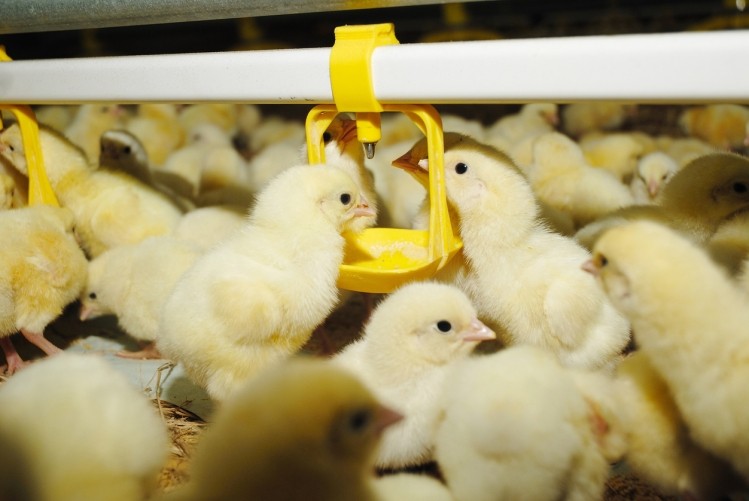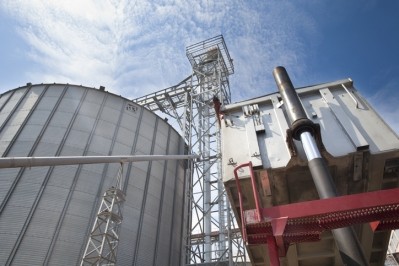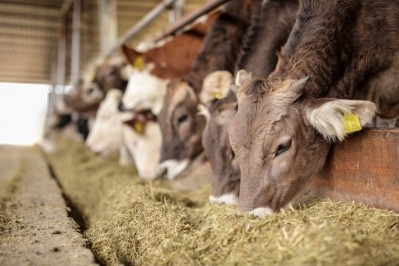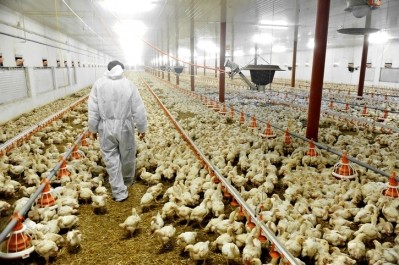Pelleting does not affect amino acid digestibility in broiler diets: study

The Brazilian authors published their work in the journal of Animal Feed Science and Technology.
They assessed AMEn by four methodologies and two physical forms of diet - mash and pelleted. They said the methodologies used were total excreta collection and use of the markers: acid insoluble ash (AIA), titanium dioxide (TiO2) and chromium oxide (Cr2O3).
The researchers found pelleting the feed improved dietary apparent metabolizable energy corrected by nitrogen balance (AMEn).
“Pelleting increases dietary AMEn, but does not affect amino acid digestibility,” the researchers said. “Total collection and AIA lead to similar AMEn values, and AIA provides higher SIDC of the amino acids.”
Why feed format and markers?
Much of the feed used in the broiler industry is pelleted, however many of the metabolism assays use mash diets, said the researchers. While there are perceived benefits from using pelleted feeds, questions about changes in nutrient digestibility remain unanswered.
The humidity and temperatures involved in the pelleting process may alter the nutrient utilization for animals, they said.
“Changes in consumption behavior, intestinal transit time and structural alteration in nutrients must be considered,” they said. “Starch digestibility is the most well-known change to occur in pelleted diet nutrients, which leads to AMEn improvement, especially on DM [dry matter] basis.”
Little work has been done exploring potential changes to amino acid digestibility during the pelleting process, they said. Ileal content is needed to examine amino acid (AA) digestibility as microbial fermentation in the intestine alters the amino acid excreta profile.
This may be done using markers, or indigestible substances, added to the diets then recovered, they said. Markers also have been used in place of total excreta collection to make an energy evaluation of diets – but the process may allow for greater variations in results.
Markers used in such trials must offer inert characteristics and not be either digested or absorbed, they said. Commonly used ingredient include chromium oxide (Cr2O3), titanium dioxide (TiO2) and acid insoluble ash (AIA)
“However, studies have indicated different results both in AA digestibility among markers and, for metabolizable energy, in markers versus the total excreta collection method (traditional method),” they said.
Methods and materials
In the digestibility study, 480 male broilers were given either a pelleted or mashed diet for a period of 10 days while being housed in metabolic cages, said the researchers. For each diet excreta was collected in several manners including total excreta collection, AIA, TiO2 and Cr2O3.
The same corn-soybean meal diet was used for the digestibility trials although the markers used varied, they said.
“Diets were pelleted in a Koppers Júnior C40 steam pelletizer with a 50 hp Siemens motor and 3/16 inch diameter ring,” they said. “The steam pressure was 1.5 kgf/cm2, the temperature was 80 °C, the retention time was 10 seconds, and the pellets measured 5 mm.”
Birds were give five days to acclimate to the diet before excreta collection started, they said. Fecal material was gathered for five days and examined to establish AME (apparent metabolizable energy), AMEn and digestibility coefficients.
On the final day of feeding, animals were weighed to check weight gain and total feed eaten was determined, they said. Birds were harvested to collected ileal content.
AME, AMEn and the indigestibility factor (IF) were calculated, they said. And the standardized ileal digestibility coefficients (SIDC) were estimated.
Results
Overall, an interaction was found between the methodologies used and the physical form of the diet, in regard to the values for AME and AMEn, said the researchers.
“Pelleting increases dietary AMEn, but does not affect amino acid digestibility,” they said. “Total collection and AIA lead to similar AMEn values, and AIA provides higher SIDC of the amino acids.”
Total excreta collection and AIA as the indigestible marker tended to offer a higher value for both AME and AMEn, they said. However, Cr2O3 presented a reduced value for both.
“The physical form of the diets produced different results in each method utilized, but pelleted diets tended to present higher AME and AMEn values (MJ/kg DM),” they said. “For Cr2O3 there was no difference between mash and pelleted diets in AMEn supplied on a dry matter basis.”
No major difference was found between format of diet, marker used and weight grain or feed intake. However, birds getting the pelleted diet gained more weight had had better feed intake.
Additionally, results for amino acid digestibility coefficients for the mashed or pelleted diets were similar, they said. But the different markers generated different results.
AIA offered higher coefficients when compared to TiO2 and Cr2O3 markers – save for methionine and lysine, which were similar in AIA and TiO2 diets, they said.
Source: Animal Feed Science and Technology
Title: Metabolizable energy and amino acid digestibility of mash and pelleted diets for broilers determined under different methodologies
DOI: doi.org/10.1016/j.anifeedsci.2017.11.003
Authors: L. Roza, F. Tavernari, D. Surek, C. Sordi, L. Albino, D. Paiano, M. Boiago, T. Petrolli, A. Cunha Júnior















